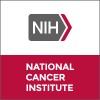Bortezomib and Vorinostat in Treating Patients With Recurrent Mantle Cell Lymphoma or Recurrent and/or Refractory Diffuse Large B-Cell Lymphoma
Recurrent Mantle Cell Lymphoma, Recurrent Non-Hodgkin Lymphoma

About this trial
This is an interventional treatment trial for Recurrent Mantle Cell Lymphoma
Eligibility Criteria
Inclusion Criteria:
- Histologically confirmed mantle cell or diffuse large B-cell lymphoma; histological material must be available for central pathological review; unstained histological material -- slides or blocks -- must be available for correlative studies; archived material from previous biopsies is acceptable, unless a patient's lymphoma has been known to undergo histological transformation in the past, in which case a repeat biopsy to confirm histology prior to enrollment is required; availability of material must be confirmed at the time of registration, but material may be submitted subsequent to registration and initiation of study treatment
- Measurable disease according to the Revised Response Criteria for Malignant Lymphoma; this requires at least one lesion greater than 1.0 cm in diameter in both the long and short axis as measured by spiral computed tomography (CT) scan or physical exam
Prior allogeneic stem cell transplant is allowed provided that all of the following conditions are met:
- >= 6 months have elapsed since allogeneic transplant
- No graft vs. host disease (GVHD) is present
- Not currently on immunosuppressive therapy
Prior therapy:
Mantle cell lymphoma:
- Previously treated or untreated
- No prior bortezomib
Diffuse large B-cell lymphoma:
- At least one prior systemic therapy
No prior bortezomib
- Note: Not intended for patients in first relapse who are candidates for high dose therapy with stem cell support
- Life expectancy of greater than 3 months
- Eastern Cooperative Oncology Group (ECOG) performance status 0, 1, or 2
- Able to tolerate loperamide or other anti-diarrheal medications
- Absolute neutrophil count >= 1.5 x 10^9/L
- Platelets >= 75 x 10^9/L
- Total bilirubin =< 1.5 x upper limit of normal (ULN)
- Aspartate aminotransferase (AST) (serum glutamic oxaloacetic transferase [SGOT])/alanine aminotransferase (ALT) (serum glutamate pyruvate transaminase [SGPT]) =< 2.5 x institutional upper limit of normal
- Creatinine within normal institutional limits or calculated creatinine clearance >= 60 mL/min according to the Cockcroft-Gault formula
- For patients with known human immunodeficiency virus (HIV) infection, a cluster of differentiation (CD)4 count >= 0.5 x 10^9/L
- For patients whose last treatment included bendamustine or fludarabine, a CD4 count >= 0.4 x 10^9/L
- Women of child-bearing potential and men must agree to use adequate contraception (hormonal or barrier method of birth control; abstinence) prior to study entry and for the duration of study participation and to report pregnancy or suspected pregnancy while participating in the study
- Ability to understand and the willingness to sign a written informed consent document
Exclusion Criteria:
- Chemotherapy or large field radiotherapy within 3 weeks prior to entering the study
- Prior histone deacetylase inhibitor as cancer treatment
- Concurrent treatment with other investigational agents
- Plans for other concurrent cancer treatment; if steroids for cancer control have been used, patients must be off these agents for >= 1 week before starting treatment; exception: maintenance therapy for non-malignant disease with prednisone or steroid equivalent dose < 10 mg/day is permitted
- History of brain metastasis including leptomeningeal metastasis
- Grade >= 2 neuropathy, regardless of cause
- Unable to take oral medications
- History of allergic reactions attributed to compounds of similar chemical or biologic composition to bortezomib or vorinostat
- Not sufficiently recovered from previous treatment
- Medical or other condition (for example: uncontrolled infection; potentially life threatening changes on electrocardiogram [EKG]) or concurrent treatment (for example, marrow suppressive agents such as zidovudine) that represents an inappropriate risk to the patient or likely would compromise achievement of the primary study objective; patients should be closely monitored when given bortezomib in combination with the cytochrome P450, family 3, subfamily A, polypeptide 4 (CYP3A4) inhibitors and inducers
- Pregnant women are excluded from this study; breastfeeding should be discontinued
- Active concurrent malignancy, except adequately treated non-melanoma skin cancer
Sites / Locations
- Moffitt Cancer Center
- Emory University Hospital/Winship Cancer Institute
- Northwestern University
- University of Chicago Comprehensive Cancer Center
- University of Maryland/Greenebaum Cancer Center
- Rutgers Cancer Institute of New Jersey
- Montefiore Medical Center-Weiler Hospital
- Montefiore Medical Center - Moses Campus
- Weill Medical College of Cornell University
- UNC Lineberger Comprehensive Cancer Center
- Vanderbilt University/Ingram Cancer Center
- Virginia Commonwealth University/Massey Cancer Center
Arms of the Study
Arm 1
Experimental
Treatment (vorinostat, bortezomib)
Participants receive vorinostat orally (PO) once daily (QD) on days 1-5 and 8-12. Participants also receive bortezomib intravenously (IV) over 3-5 seconds on days 1, 4, 8, and 11. Vorinostat precedes bortezomib on days of concurrent administration. Courses repeat every 3 weeks in the absence of disease progression - or unacceptable toxicity. After completion of study therapy, participants are followed periodically. Treatment arm consists of 3 cohorts, all receiving the same treatment: A: Mantle Cell Lymphoma (MCL) - with no prior bortezomib. B: Mantle Cell Lymphoma (MCL) - with no prior bortezomib. C: Diffuse Large B-Cell Lymphoma (DLBCL) - with no prior bortezomib.
Outcomes
Primary Outcome Measures
Secondary Outcome Measures
Full Information
1. Study Identification
2. Study Status
3. Sponsor/Collaborators
4. Oversight
5. Study Description
6. Conditions and Keywords
7. Study Design
8. Arms, Groups, and Interventions
10. Eligibility
12. IPD Sharing Statement
Learn more about this trial
